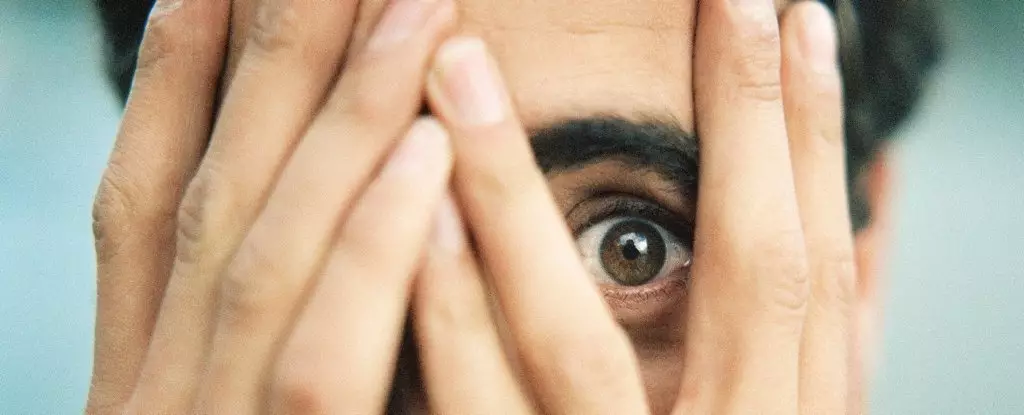In a world rife with distractions, few stimuli are as puzzling as the sight of someone fidgeting. Whether it be a restless tapping of feet or the incessant twisting of a pen, fidgeting seems to provoke intense reactions from witnesses. This phenomenon, termed ‘misokinesia,’ encapsulates a common psychological response where certain visual movements evoke discomfort, irritation, or even anxiety. What was once an under-explored aspect of human behavior is now garnering attention for its prevalence and psychological ramifications, sparking a deeper investigation into why such harmless actions can provoke striking emotional reactions in observers.
The roots of misokinesia lie in its similarity to another auditory-based condition known as misophonia, wherein individuals experience negative emotions in response to specific repetitive sounds. Though both conditions share a common theme—unwanted sensory stimuli—misokinesia diverges by being largely visual in nature. Researchers indicate that nearly one in three individuals report adverse reactions to the repetitive movements of others, suggesting this isn’t an isolated condition but a widespread phenomenon. The pioneering study led by Sumeet Jaswal and his colleagues revealed that this heightened sensitivity is not merely an annoyance but a genuine psychological reaction that can ripple through a person’s social and professional life.
Study Findings: A Closer Look
Delving deeper, the researchers conducted a plethora of experiments involving more than 4,100 participants, focusing on university students and the general public. These studies unveiled a striking realization: a significant portion of people experience some level of discomfort related to others’ fidgeting. The implications are far-reaching; discomfort with fidgeting can affect emotional states, social interactions, and even overall well-being. Notably, those individuals who report higher sensitivity often describe feelings of frustration, anxiety, and distractibility in settings where fidgeting occurs frequently, such as classrooms and workplaces. Strikingly, some participants even curtailed their social engagements to avoid uncomfortable situations.
This raises an intriguing question: what underpins our reactions to fidgeting? The initial hypothesis considered whether those with misokinesia might possess heightened visual-attentional sensitivities, which would result in an inability to filter out distracting movements. However, this hypothesis found little support in the study’s outcomes, leading researchers to explore alternative explanations. One particularly innovative angle introduced by Jaswal and his team centers around the role of ‘mirror neurons’—specialized brain cells that activate both when we perform an action and when we witness someone else engaging in the same action. This could suggest that individuals suffering from misokinesia might inadvertently empathize with fidgeters, feeling individuals’ anxiety or discomfort manifested through their movements.
The connection between fidgeting and anxiety cannot be overlooked. Fidgeting often serves as a coping mechanism for individuals dealing with stress or nervous energy. This creates an ironic dynamic: those who suffer from misokinesia may find themselves in a cycle of empathy that worsens their discomfort, leading them to experience the very anxiety that the fidgeters are attempting to alleviate. Thus, the seemingly innocuous act of fidgeting spins into a web of emotional intersections, highlighting how deeply interconnected human responses can be.
Despite the significant emotional and social challenges posed by misokinesia, awareness of the condition remains disturbingly low. Many individuals grappling with these feelings might feel isolated or even stigmatized, believing their reactions are irrational or unfounded. However, the research indicates otherwise, affirming that misokinesia is a real phenomenon experienced by many. For those affected, understanding this condition, and recognizing that they are not alone in their experiences, can be a monumental first step toward managing their reactions to fidgeting.
As the study of misokinesia grows, future research must aim to unravel the intricacies of this under-analyzed psychological response. Investigating the neural mechanisms at play, alongside potential therapeutic interventions, could pave the way for improved coping strategies for those affected. Understanding misokinesia is not just an academic pursuit; it bears profound implications for creating more supportive environments for individuals sensitive to visual distractions. In the meantime, fostering awareness can help bridge the gap between fidgeters and those affected by misokinesia, promoting empathy and understanding in shared spaces. Armed with knowledge, our approach to these seemingly trivial movements may evolve, cultivating a more accommodating society.

